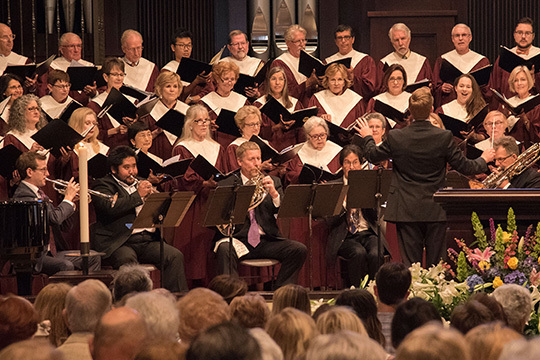Mobile security cameras are great for locations where hard-wired systems may be impractical or unavailable. They can be used for a variety of purposes and offer a number of advantages over traditional security cameras.
These benefits include visible deterrence, remote monitoring, and rapid response to suspicious activity. They can also help reduce damage to oil and gas fields, power stations, and other facilities in remote areas. For more information, click the Vision Detection Systems to proceed.

While mobile security cameras are not as common as traditional wired models, they are becoming more popular. These wireless devices can connect to the internet via a cellular network and transmit footage to a device that you can monitor on your smartphone. They are especially useful in remote areas and during power outages. They can also be used by live security guards to get a bird’s-eye view of the property.
Compared to their hardwired counterparts, mobile surveillance systems are easy to install and cost-efficient. They also feature motion detectors, power supply options, and remote access. These features make them an excellent choice for businesses and individuals who are looking to add more security to their home or business.
Another benefit of mobile security cameras is that they can be repositioned quickly and easily. This helps them address short-term needs, such as crime hotspots. It also eliminates the need to pay for expensive upgrades to hardwired security systems.
Wireless mobile security cameras are usually battery-powered and can be placed anywhere on your property. Some have integrated solar panels for extended runtime and low operating costs. They can also be connected to a wireless network to enable two-way communication and provide alerts. Some also have a programmable light display, which can deter criminals and other unwanted visitors.
In addition to providing real-time video feeds, mobile security cameras can also be accessed remotely from a smartphone or tablet. Many of these devices offer cloud storage and other security features to prevent unauthorized access to your cameras. Some of them can even detect tampering, which is an important security measure.
With all the recent high-profile cases of crimes, it’s no surprise that people are taking extra steps to protect their homes and businesses. While some of these measures are extreme, they can make a big difference in the overall safety of your home or business. Mobile security cameras are an effective and affordable way to add more security to your property. They are portable and can be set up in just a few minutes. In addition, they can be repositioned as needed without the hassle of rewiring or modifying existing systems.
If you’re looking for mobile security cameras that work with your existing Wi-Fi network, you can choose from a range of wireless models. These systems can be set up in minutes, and are easy to move around the premises if you need to. They’re also suitable for use in small or large businesses.
Wireless security cameras transmit data through radio waves, and can be accessed via a mobile device or computer. They can be connected to a DVR or NVR, or can send data to a cloud-based service for storage and viewing. Some of these cameras can even detect movement and send alerts to the user when it is detected. Cellular based mobile security cameras, which run on a separate mobile data plan, are available as well.
Most wireless security cameras require some form of electricity, but this doesn’t necessarily mean that they need to be plugged into a power socket. Some can be powered by USB cables, batteries or solar charging panels. Some models even have onboard storage, and can record footage without the need for an internet connection. This feature is ideal for users who are worried about data privacy or have limited access to the internet.
The most important thing to keep in mind when choosing a wireless security camera is that it needs to be able to communicate with other devices in order to function properly. This is why it’s important to make sure that you have a secure Wi-Fi network, and that your wireless security cameras are compatible with the network. In addition, you should check the quality of the camera’s video recording.
Wireless security cameras can offer a lot of benefits, and can help to improve the safety of your family, home or business. They’re convenient and easy to use, and they provide a level of security that’s hard to match. These cameras can be used to deter criminal activity, and can help you identify a crime in progress. They’re also great for law enforcement agencies, which can use them to improve their surveillance capabilities. In fact, many law enforcement agencies are incorporating mobile security technology into their operations, as it offers a number of advantages that other surveillance solutions can’t match.
Unlike wired security systems that require expensive cables and dedicated wiring, mobile cameras are wireless, portable, and can be used anywhere. They can also be controlled remotely, making them ideal for surveillance at temporary or remote locations. They are also more cost-effective than hiring a security guard or installing a fixed security system. They are a perfect solution for protecting large areas such as parking lots and warehouses from theft, vandalism, or other crimes.
A mobile security camera can be bought at any home improvement or hardware store for a relatively low price. Most models are available for under $100 and feature a variety of features. You can find options with indoor and outdoor capabilities, as well as options that are capable of pan-and-tilt motion detection. Some are equipped with a spotlight that can scare off intruders. Others have night vision that allows them to see in the dark. Regardless of what model you choose, be sure to check its video resolution and field of view before buying. Also, look for a model that is easy to use and offers instant alerts.
You can also find a number of affordable options from companies like Blink, Amazon-owned brand that focuses on budget cameras. The company’s entry-level model, Blink Indoor, is a good choice for anyone looking to protect their homes without breaking the bank. These cameras are designed to be easy to install and connect with Alexa smart displays. They offer a high battery life, which can last for up to two years.
The best mobile security cameras are the ones that can capture the most important details of a scene. They should have a resolution of 1080p or higher and a wide field of view. They should also be able to detect moving objects and respond quickly with notifications on your phone. Some cameras even come with starlight night vision, which can capture clearer images and distinguish colors of clothing and vehicles at a distance.
You can also choose a camera with built-in storage, which is useful for keeping your videos secure without the need for a monthly cloud storage subscription. Some of these cameras can also record audio and support 2-way communication, which is great if you want to talk to the postman or your neighbors from your mobile phone.
Whether your home or business, security cameras are useful for many reasons. Not only do they deter criminal behavior, but they can also prove to be helpful when it comes to settling disputes in domestic or professional scenarios. Footage from a security camera can provide accurate information as to what actually happened during an incident. This can help a judge, jury, or other legal body make a more informed decision when resolving a case.
Wireless mobile security cameras are great for locations and situations where it is difficult to install a hardwired camera. This includes rural and remote areas, construction sites, oil fields, and industrial sites. The main advantage of this type of camera is that it can be moved and repositioned quickly, making it ideal for temporary security needs.
Another benefit of these cameras is that they don’t require expensive recurring fees. Most cellular cameras don’t have a monthly or yearly cloud storage fee, and instead store the footage on a physical device (either an SD card or a DVR). Some cellular cameras even offer the same smart features as wifi-powered models, including notifications and remote access.
Some cellular cameras also have additional features that serve as a deterrent. For example, some have a built-in siren or strobe lights that can scare off potential criminals and alert neighbors. They can also be armed with advanced face recognition software and improved accuracy for motion sensing and alarm triggering, decreasing the number of false alarms.
If you’re looking for a security camera that is easy to set up and use, consider the wire-free options from brands like Arlo or Eufy. These cameras don’t require any wiring for power or data, and can be set up in a matter of minutes. You can connect them to your phone via a data cable, or you can use a smartphone app that is designed to interpret the camera’s feed.
When deciding on which security camera to purchase, look for a brand that offers a wide range of wireless options, including outdoor options. You should also choose a camera with a large screen and high-quality video resolution. A low-resolution camera is not likely to provide the best quality, and may not be as reliable in extreme weather conditions.



